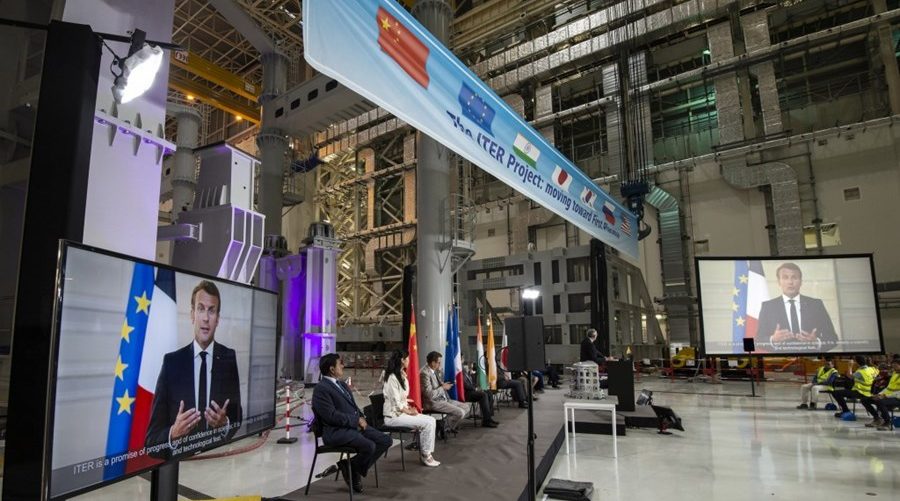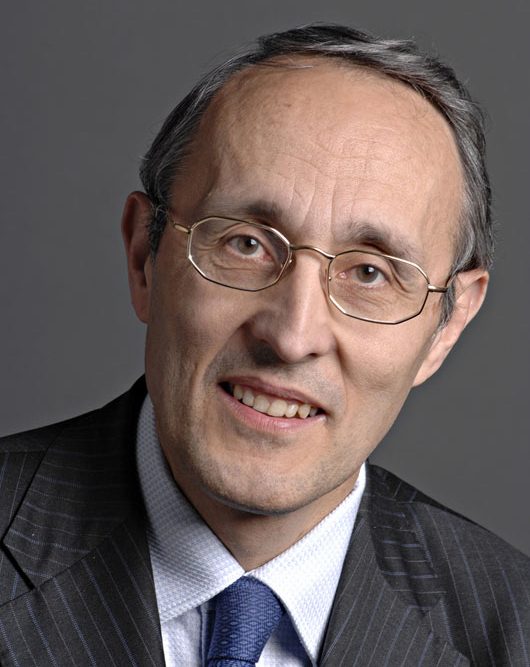
First-of-a-kind components have been arriving in recent months at the ITER construction site in Cadarache, France, from the 35 ITER member countries around the world. The arrival on July 21 of the first sector of the ITER vacuum vessel from South Korea marked the beginning of a four-and-a-half year machine assembly process for the world’s largest tokamak, a magnetic fusion device designed to prove the feasibility of fusion as an energy source.
On July 28, technical and civil leaders from ITER member countries celebrated the beginning of assembly with a global event hosted virtually by French President Emmanuel Macron and livestreamed on YouTube.
As the host member for ITER, the European Union (with the United Kingdom and Switzerland) is funding 45 percent of the project’s cost. Each of the other members—the United States, China, Japan, Russia, India, and South Korea—is contributing 9 percent. Many of the components arriving in France are being provided as in-kind contributions.
Buildings and civil works across the ITER site are the responsibility of Europe and are about 75 percent complete. The Tokamak Building and Assembly Hall have been completed and are linked by a 170-meter overhead crane rail supporting two 750-ton cranes that will transport and position components.
Assembling ITER is the responsibility of the central ITER organization. The work includes the assembly of the tokamak itself, as well as the parallel installation of support systems such as radio frequency heating, fuel cycle, cryogenics, cooling water, vacuum, control, and high voltage electrical systems.

“Constructing the machine piece by piece will be like assembling a three-dimensional puzzle on an intricate timeline,” said Bernard Bigot, director-general of the ITER Organization.
“Every aspect of project management, systems engineering, risk management, and logistics of the machine assembly must perform together with the precision of a Swiss watch,” Bigot said. “We have a complicated script to follow over the next few years.” At the completion of machine assembly, scheduled for December 2025, ITER scientists and engineers plan to demonstrate the machine’s function by initiating “First Plasma.”
Principal assembly activities will take place in the Tokamak Building, where the ITER device will be installed in a partially embedded concrete bioshield. The circular tokamak will be preassembled in nine subassemblies in the adjacent Assembly Hall. Each 40-degree section will integrate a vacuum vessel sector, a protective silver-coated thermal shield, and two toroidal field coils.
The burning goal: ITER is expected to produce about 500 MWt, which would translate to about 200 MWe if the plant were operated continuously and connected to the electric grid.
In the tokamak, a few grams of deuterium and tritium will be heated to a cloud-like ionized plasma, shaped by 10,000 tons of superconducting magnets. Fusion would occur when the plasma reaches 150 million °C — 10 times hotter than the core of the sun—releasing a huge amount of energy transmitted as heat.
ITER is expected to be the first to achieve a “burning,” or self-heating, plasma. A potential commercial fusion plant would use the released heat energy to generate electricity using a steam turbine.
Source: ANS
